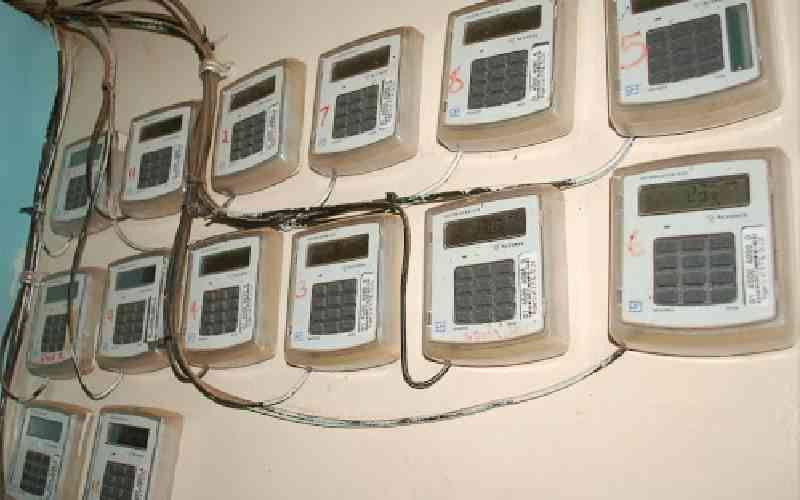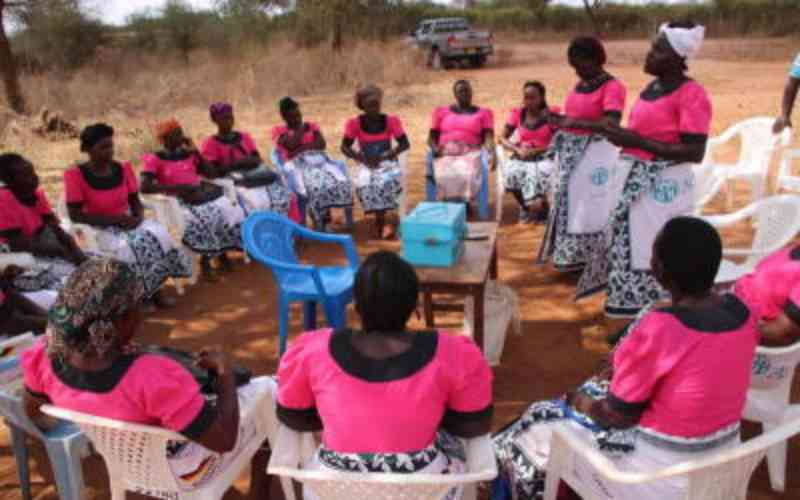
The Kenya Electricity Transmission Company (Ketraco) reckons it is on the verge of accomplishing what could substantially reduce the cost of power in the country.
The State-owned firm charged with building and managing high voltage power transmission lines is on the tail end of two projects, which will supply cheaper power to Kenyan households.
These are the Eastern Electricity Highway Project, which connects the power grids of Ethiopia and Kenya, and the Olkaria-Lessos-Kisumu line. They are slated for completion early next year.
The former line will give Kenya access to Ethiopia’s hydropower plants, with the two countries already having struck a deal that will see Kenya import some 400MW of power at Sh7 per unit.
This could displace a chunk of power that costly thermal power plants feed into the Kenyan grid.
The line between Olkaria and Lessos and Kisumu will offer Western Kenya access to geothermal power, a much cheaper and reliable energy source compared to the commonly used thermal generators.
Ketraco Chief Executive Fernandes Barasa explained that the Kenya-Ethiopia line is critical on several fronts.
For starters, it will give Kenya access to the cheap hydropower generated in Ethiopia.
This will mean cheaper power for Kenyans as it will result in less reliance on the more expensive thermal generators. It will also play a part in enhancing trade in electricity in the region.
“It has a direct impact on the cost of electricity in the country,” said Barasa in a recent interview.
A recent brief by the World Bank, one of the project financiers, said it would “increase the volume and reduce the cost of electricity supply in Kenya”.
A secondary objective, the global lender said, is to provide Ethiopia with a market for its power “through the export of electricity from Ethiopia to Kenya”.
At Sh7 per unit, it is a fairly good price compared with the cost of power generated by the geothermal power plants in the country.
The line will also enhance regional trade in electricity.
Stay informed. Subscribe to our newsletter
“The line has a capacity of 2,000MW and when it comes on board, it will provide a framework for regional power trade between Kenya and Ethiopia as well as other countries in the region,” said Barasa.
“When we have excess, we will use this interconnector to export power. This will facilitate regional power trade and address the competitiveness of power in the region. Some countries have excess power, but demand is low.”
It will be in addition to an ongoing Kenya-Tanzania line that is expected to stretch the network further to Burundi and Rwanda.
Barasa also noted that another line between Lessos and Tororo in Uganda will be coming on board soon.
The Kenya-Ethiopia line is being built at a cost of Sh64 billion, which makes it one of the most expensive infrastructure projects in the country.
Other than the World Bank, other financiers are the African Development Bank and the French Development Agency. There are also components financed by the two governments.
“The line is 96 per cent complete and we expect the remaining works to be completed by December this year. We will also need four to five months of commissioning the converter station. We expect everything to be complete by April next year,” said Barasa.
The other game-changer, according to the Ketraco boss, is the line stretching 310km from Olkaria to Kisumu through Lessos.
The line will enable the power sector players to evacuate electricity from the geothermal fields of Olkaria to Western Kenya.
This will, in turn, allow the region to cut its reliance on thermal power plants at Muhoroni.
The region has to rely on diesel generators as the 132-kilovolt line that would take power generated from Olkaria is in no shape to transmit electricity.
Barasa said the new line is nearing completion, with the commissioning expected by the end of January.
“This is a significant project because it is going to evacuate geothermal power from Olkaria to the western region,” he said.
“The region has a suppressed demand of almost 400MW that cannot be met by the thermal plants. The line is 76 per cent and is expected to be complete by January 31, next year. This line is important for the entire western region.”
Electricity from thermal plants is priced at over Sh30 per unit compared to geothermal plants at about Sh7 per unit.
This is before other charges, including the fuel and forex adjustments as well as levies and taxes are loaded on them.
When a segment of the country consumes expensive power, the high cost is shared among all consumers, which could mean increased use of geothermal power in Western Kenya might result in a drop in the cost of power for all consumers.
“The line will address the uptake of renewable energy in Western Kenya and replace the costly diesel generators. It will also address the stability of power. This is what our manufacturers are yearning for,” said Barasa.
“By eliminating the diesel generation in the region, definitely the cost of power will come down.”
One of the sticking points in the execution of the two projects has been their delay, a hallmark of most State projects.
Such delays are usually costly to taxpayers, with the Loiyangalani-Suswa line a case in point.
The Power Purchase Agreement (PPA) between Kenya Power and the Lake Turkana Wind Power plant required the government to have in place a transmission line to evacuate power from the plant to the switchyard in Suswa.
This had not happened by the time the plant was completed, resulting in the government paying an upfront Sh5.6 billion negotiated penalty in 2017.
Another Sh9.25 billion will be cleared over six years starting 2018 through a slight tariff increase.
The delays are due to a mix of factors. If it is not landowners asking for more money to let Ketraco build its pylons on their land, then it is communities who are too attached to their ancestral land to give it up.
In other cases, contractors experience cash flow problems as was the case with Isolux Corsan that went bust in the process of building the Loiyangalani-Suswa line.
The delays have at times translated into a higher cost of building the power transmission lines.
“One of the biggest challenges is wayleave acquisition. We have had challenges when it comes to agreeing with landowners to allow us to traverse their land. This has called for a lot of negotiations with them as well as the National Land Commission,” said Barasa.
“We have also had some social-cultural issues whereby in some instances, people are attached to ancestral lands. We have had to divert lines where possible.”
The Eastern Electricity Highway Project was expected to have been completed in June last year but was then moved to December this year and now to April 2021.
Ketraco has in the past noted that some 8,000 manyattas sprung up along the Ethiopia-Kenya line in Samburu East after the project had already kicked off, calling for a fresh round of negotiations and payouts.
While the Olkaria-Lessos line has been affected by the Covid-19 pandemic, it has failed to meet several deadlines.
“We were supposed to have completed it this year, but we have lost time since March. Covid-19 affected construction works and we had to invoke force majeure clause in the contract by suspending works by four months. That had a direct impact on the timeline but we are back on track and expect it to be complete by end of January,” said Barasa. On the Loiyangilani-Suswa line, delays occasioned by the problems experienced by the initial contractor as well as challenges dealing with the community spiked the project’s cost from Sh17 billion to about Sh28 billion. This is in addition to the penalties on the government and consumers.
Barasa noted that the line was worth the trouble considering the amount it saves consumers every year.
He estimates the Sh6 billion saved in fuel cost adjustment every year will in about 15 years amount to what was used in constructing the plant (Sh70 billion) and the transmission line (Sh28 billion).
[email protected]
 The Standard Group Plc is a
multi-media organization with investments in media platforms spanning newspaper
print operations, television, radio broadcasting, digital and online services. The
Standard Group is recognized as a leading multi-media house in Kenya with a key
influence in matters of national and international interest.
The Standard Group Plc is a
multi-media organization with investments in media platforms spanning newspaper
print operations, television, radio broadcasting, digital and online services. The
Standard Group is recognized as a leading multi-media house in Kenya with a key
influence in matters of national and international interest.
 The Standard Group Plc is a
multi-media organization with investments in media platforms spanning newspaper
print operations, television, radio broadcasting, digital and online services. The
Standard Group is recognized as a leading multi-media house in Kenya with a key
influence in matters of national and international interest.
The Standard Group Plc is a
multi-media organization with investments in media platforms spanning newspaper
print operations, television, radio broadcasting, digital and online services. The
Standard Group is recognized as a leading multi-media house in Kenya with a key
influence in matters of national and international interest.








